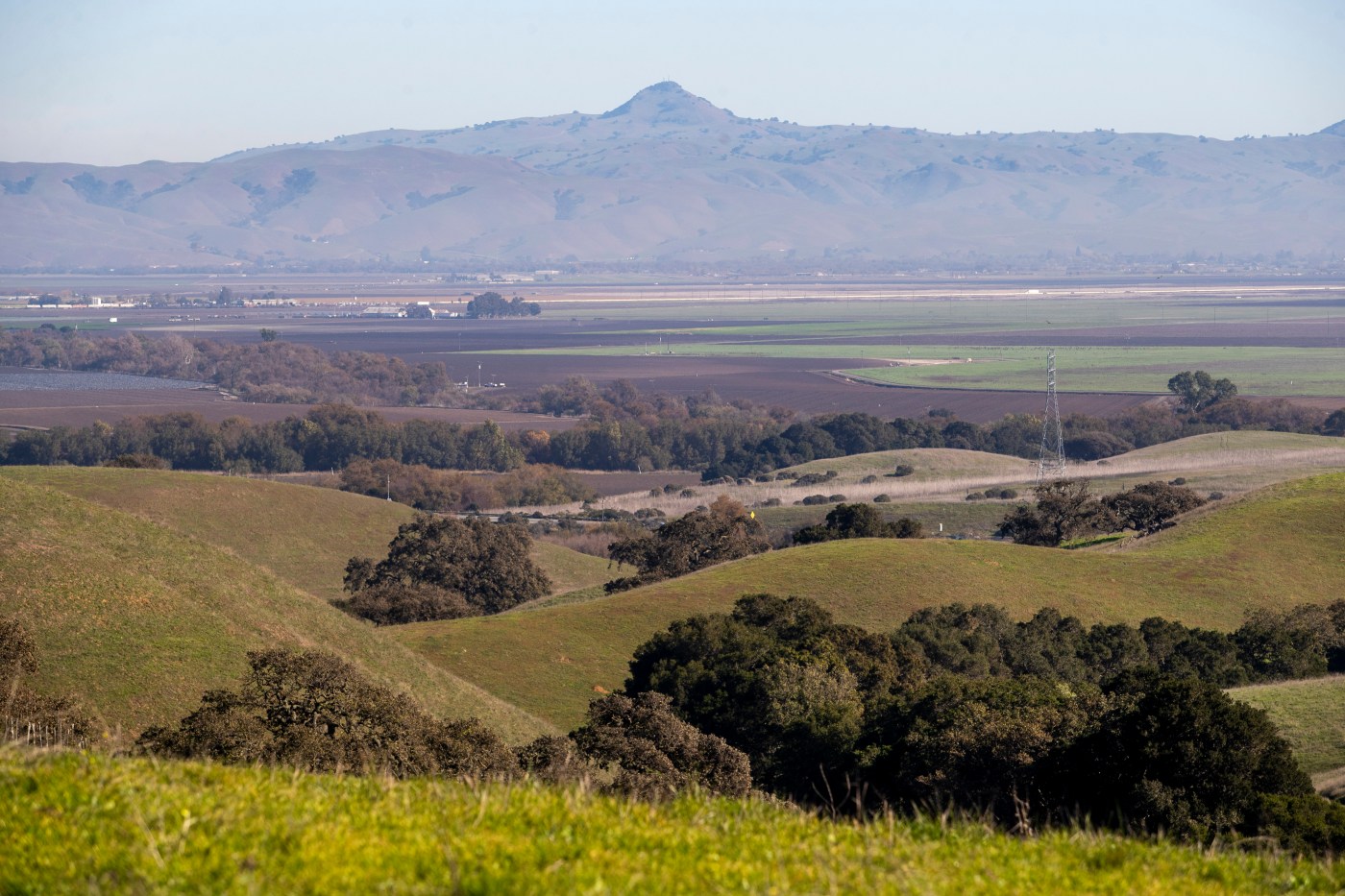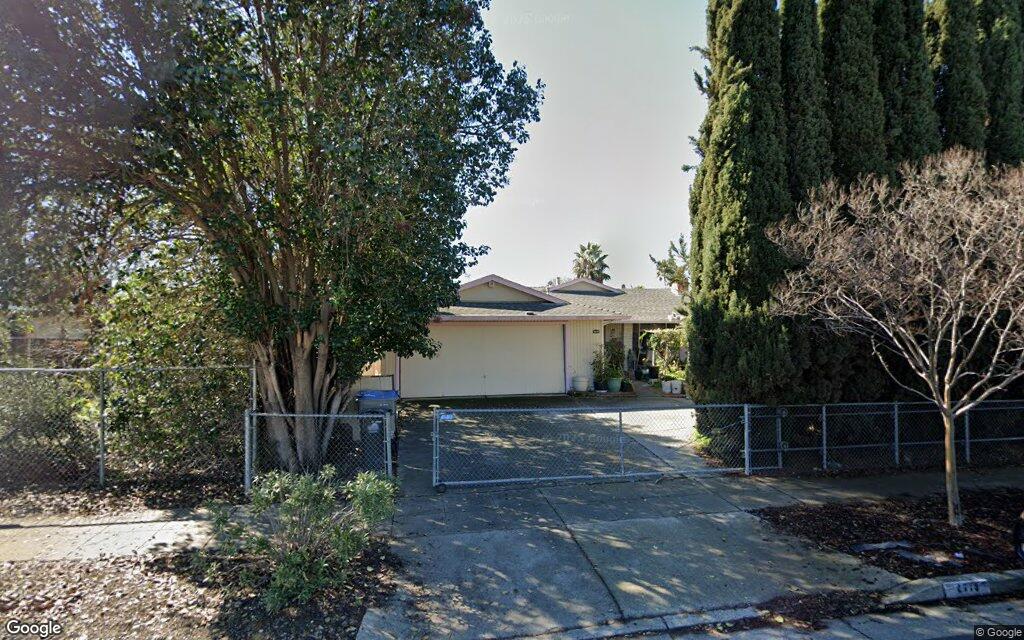In a major development affecting one of the most contentious land use battles in the Bay Area over the past decade, a Palo Alto environmental group has purchased a large chunk of Sargent Ranch, a sprawling property along Highway 101 south of Gilroy — and the Southern California investor group that proposed a sand and gravel quarry there has asked officials to suspend their review of the project.
The nonprofit Peninsula Open Space Trust spent $25.1 million to buy 2,467 acres of the ranch from Sargent Ranch Partners LLC, based in San Diego, in a deal recorded Thursday in Santa Clara County.
“We are very pleased to have had the opportunity to collaborate with the previous landowner to have achieved such a positive outcome,” said Gordon Clark, president of the Peninsula Open Space Trust, in a statement.
Centered on one of the largest remaining private undeveloped landscapes in Santa Clara County, the quarry proposal has been opposed by environmental groups, multiple city councils including in Santa Clara, Mountain View and Sunnyvale, and the Amah Mutsun tribal band, which previously inhabited the area for thousands of years.
Last October, the Peninsula Open Space Trust spent $15.6 million to purchase another 1,340 acres of the ranch from the investor group. With the latest purchase, the organization, which protects open space in San Mateo and Santa Clara counties, now owns nearly two-thirds of the 6,500-acre property.
Clark said he could not answer questions about whether the organization is in negotiations for the remaining 2,500 acres, on which the quarry project is proposed.
But when his organization purchased the previous piece, he said it hoped to eventually transfer the land to a parks agency, tribe, rancher or other new owner with language in the deed prohibiting future development.
Jacqueline Onciano, director of the Santa Clara County Planning and Development Department, said Monday that Howard Justus, a San Diego businessman who leads the investor group that owns the ranch, sent an email to her department in April requesting that the county suspend its review of the quarry project’s environmental impact statement.
Onciano said she told Justus that under county ordinances, he could either withdraw the project entirely or modify it. Modifying it would require new environmental studies, she said.
“They asked us to suspend the application and I let him know that, per our ordinance, we needed a formal letter of withdrawal,” she said. “We haven’t heard back on that yet.”
Justus did not respond Monday to calls seeking comment about whether the quarry project is officially dead, or whether he plans to sell the remaining acreage.
In an interview with this news organization in 2019, he said the quarry would provide much-needed sand and gravel for Bay Area building projects. It would only affect about 400 acres of Sargent Ranch, he added, saying that he would be amenable to allowing some public hiking there.
“This is a project that allows for doing well by doing good,” said Justus, managing director of Debt Acquisition Company of America. “We are able to provide a consistent and reliable sand source for the South Bay at a fraction of the carbon footprint and to conserve an incredible piece of property.”
Justus’ group purchased Sargent Ranch in 2013 from Wayne Pierce, a La Jolla developer who tried to build golf courses, hotels, a casino and other projects there, only to file for bankruptcy.
The new owners announced plans for the quarry in 2015, setting off opposition from environmental groups, the Amah Mutsun tribe and others.
On Monday, they reacted with surprise to the news that the investor group has sold off nearly two-thirds of the property and attempted to halt county review of the environmental report, which had more than 10,000 public comments.
“It is terrific news. It all sounds very positive,” said Alice Kaufman, policy and advocacy director with Green Foothills, a nonprofit environmental group. “When you are out on this property you feel like you are seeing it the way it was 100 years ago. It is a pristine landscape.”
Kaufman noted the landscape forms a key route for mountain lions, bobcats, deer and other animals to migrate between the Santa Cruz Mountains, the Diablo Range and the Gabilan Range.
“It’s so important for wildlife and future generations to keep it protected and not allow it to be excavated for an open-pit sand and gravel mine,” she said.
In the 1830s, the property became a Mexican land grant, and then was purchased by James P. Sargent, a New Hampshire native who came to California with his brothers during the Gold Rush, became wealthy and eventually represented Santa Clara County in the state Legislature from 1871 to 1873.
During the late 1800s, a railroad depot, cottages, a hotel, a post office, a saloon and an open-air dance floor operated near the ranch. It was a popular spot for vacationers from San Jose and San Francisco, who hunted and had picnics along the nearby Pajaro River.
The property also has substantial cultural significance. The Amah Mutsun tribal band and its supporters refer to it as part of Juristac, a roughly 30,000-acre area between Gilroy and San Juan Bautista that was the ancestral home of the Amah Mutsun people for 10,000 years before Spanish explorers arrived in California in the 1700s.
“This is what we have been hoping and praying for,” said Valentin Lopez, chairman of the tribal band on Monday. “We’re really thankful.”
Lopez said tribal members would like to be able to return to the landscape after hundreds of years.
“This is the area where our most sacred ceremonies were held,” he said. “Juristac was the home of our spiritual leader. We don’t want to cut the property into a bunch of little parcels and desecrate it. It’s important to us that it be preserved as a whole.”
Part of the 1,340-acre Sargent Ranch property south of Gilroy, Calif., on Thursday, Oct. 24, 2024. The Peninsula Open Space Trust, a Palo Alto environmental group, purchased 1,340 acres of the scenic property along Santa Clara County’s southern border for $15.6 million. (Doug Duran/Bay Area News Group)





